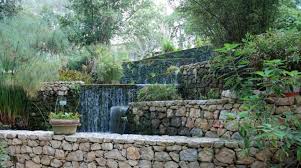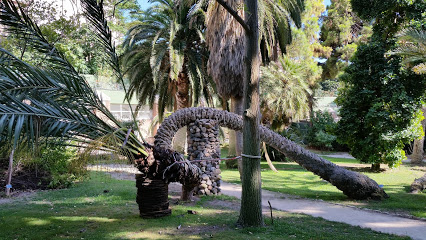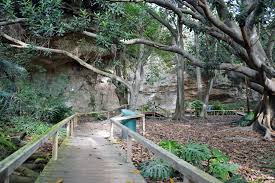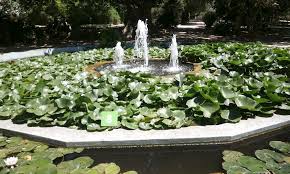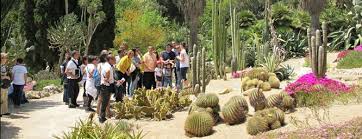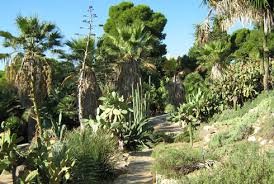In Cagliari, the first attempt to establish a botanical garden dates from 1761 to 1763, by Prof. M. a. Yard, surgeon and botanist. The site chosen was "Su Campu de su Re" (Camp King), between the gates of Villanova and Del Guess, near Campo de Martí, in the present-day Villanova region, in a place that later retained the name for a long time from "Sa Botanica" (botany) ). The implementation of this first project, in which the work of convicts at the San Bartolomeo Criminal Court was used, was suspended in 1763 because of the expenses incurred up to that time, which the government considered excessive, and was finally abandoned in the aftermath of the inspection which considered the soil "sandy, unable to Any product, not fit for purpose at all. " Only in 1820, a new land was identified in the Palabanda Valley, where the current botanical garden was later built. In the 16th century, the land of Palabanda was donated to the famous physician Porcell by Philip II in recognition of the services rendered in Spain. He later became king of the Jesuit Order, which he probably converted into vegetable crops and gardens. When the order was removed from the Kingdom of Sardinia (1778) it was confiscated in Reale Patrimonio. Ten years later, Stefano Barberes was granted the privilege of planting a nursery for mulberry trees, including a silkworm breeding plant that continued to function until 1793 when Barberes, who was from Barre, had to abandon him to expel him. From Piedmont from the island. Several years later, after the failure of Jasmine, the property moved to Avv Street. Salvatore Cadido, who planted three hectares of vineyards and used the mass that then existed as a country house. In this house, which remains of no trace at the moment, a conspiracy of Balabanda (October 1812), aimed at overthrowing the throne of Vittorio Emanuel I, was organized and discovered. Cadeddu, considered one of the promoters of the plot, was arrested and hanged in the nearby Piazza d’Armi. The area, which became notorious, was abandoned and used as a public burial. In 1851, the university dealt with the purchase of the land in favor of Professor Melony Bell who in 1858 began its destination as a botanical garden. The project was commissioned by the architect Gaetano Cima in 1853 and ministerial approval came in 1863. Excavations began in 1864 under the guidance of its founder, Professor Patrizio Gennari, with the help of Giovanni Battista Canepa, the gardener in the Genoa Botanical Garden. It was inaugurated on 15 November 1866, with Professor Patrizio Ginari talking about the natural history of Sardinia for twenty years between 1846 and 1866 at the University of Ola Magna. The efficiency and wealth of the founder, who had to work amid great difficulties such as lack of water availability (the water available was slightly salty), was rewarded after a few years of results obtained. In 1874, GENNARI published the first "Guide to the Botanical Garden of the Royal University of Cagliari" where it mentioned historical precedents, various fluctuations of the foundation, management and location of many existing and coming plants from all continents. The title that the founder and first gardener wanted to present to the park was the title of the “garden model” in particular to adapt to exotic tropical plants through the establishment of the nursery. Despite the difficulties encountered in the early twentieth century, the founder's design was realized: "A typical botanical garden dedicated to us to develop the horticulture industry, an institution of the best arrangements for climate reasons with great experiences of adaptation and real incubation in the botanical gardens of the continent" (Kavara, 1900 ). Also in 1900, when he was director of the Botanical Garden, Professor Cavara wrote: "Although it was the last to be born, the Botanical Garden of Cagliari can boast that it has become one of the most important gardens in Italy." Prosecutors in Ginari's work were professors Lovisato (1893--1898), Kavara (1899--1900), Pelly (1901--1908) and Nicotra (1910--1914), all of whom contributed to making the world well known in the international sphere. 'Orto cagliaritano, thanks to all the remarkable increase in species coming from other continents. From 1915 to 1920 Professor Valcki was the director, then Professor Jolla (1920-1921) and then again Valcke (1921-1924), who was the chief gardener of Leonardo Ponsignori of Palermo, who was also a valid partner for later managers. From 1924 to 1925 he was a director, then Professor Mameli Calvino (1925-1929), mother of the writer Ito Calvino, and Professor Renato Pampanini (1930-1943).
x
T
R
F
I
H
I
We have 16614 Parks Now ... The First and largest platform for green public parks
Orto Botanico di Cagliari
Orto Botanico di Cagliari
Via Sant'Ignazio da Laconi, 11, 09123 Cagliari CA, Italy
saturday : 08:00 am To 08:00 pm . Sunday, Tuesday, Wednesday, Thursday, Friday : 09:00 am To 08:00 pm .
About Park
-
Preview
Historic garden featuring trees & plantsImportant Information
-
saturday
08:00 am To 08:00 pm Sunday, Tuesday, Wednesday, Thursday, Friday
09:00 am To 08:00 pm -
Foundation Date
1/1/1763
-
saturday
-
Intertainment Elements
Sports
Sitting places
Entertainment
Trips
Education
-
Main Elements
- Cleanliness
- Green areas
- Open spaces
- Attractions


